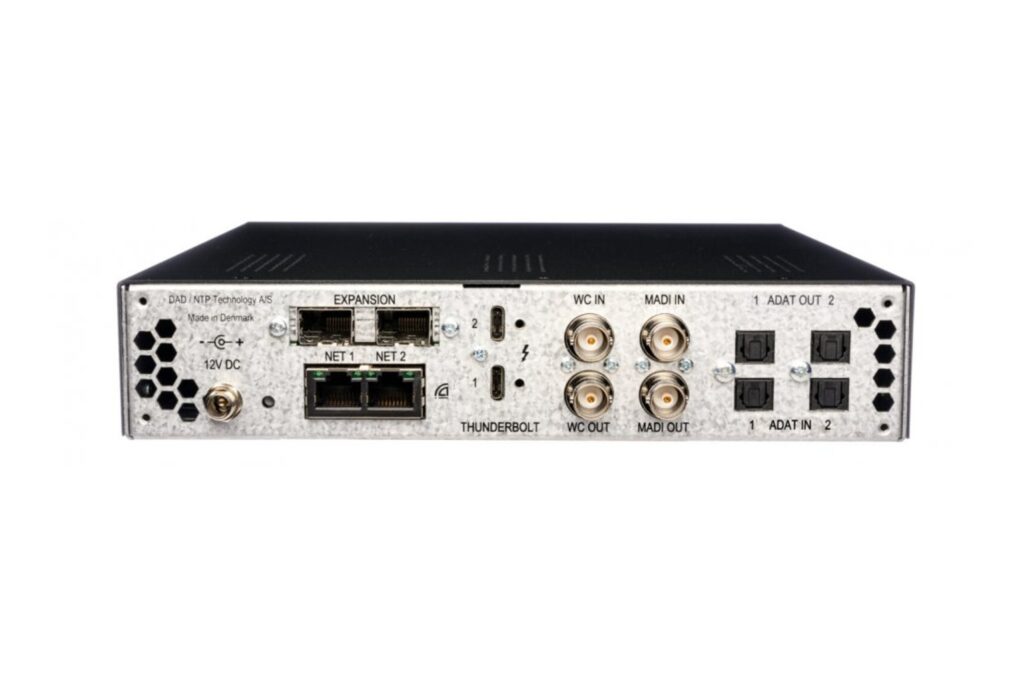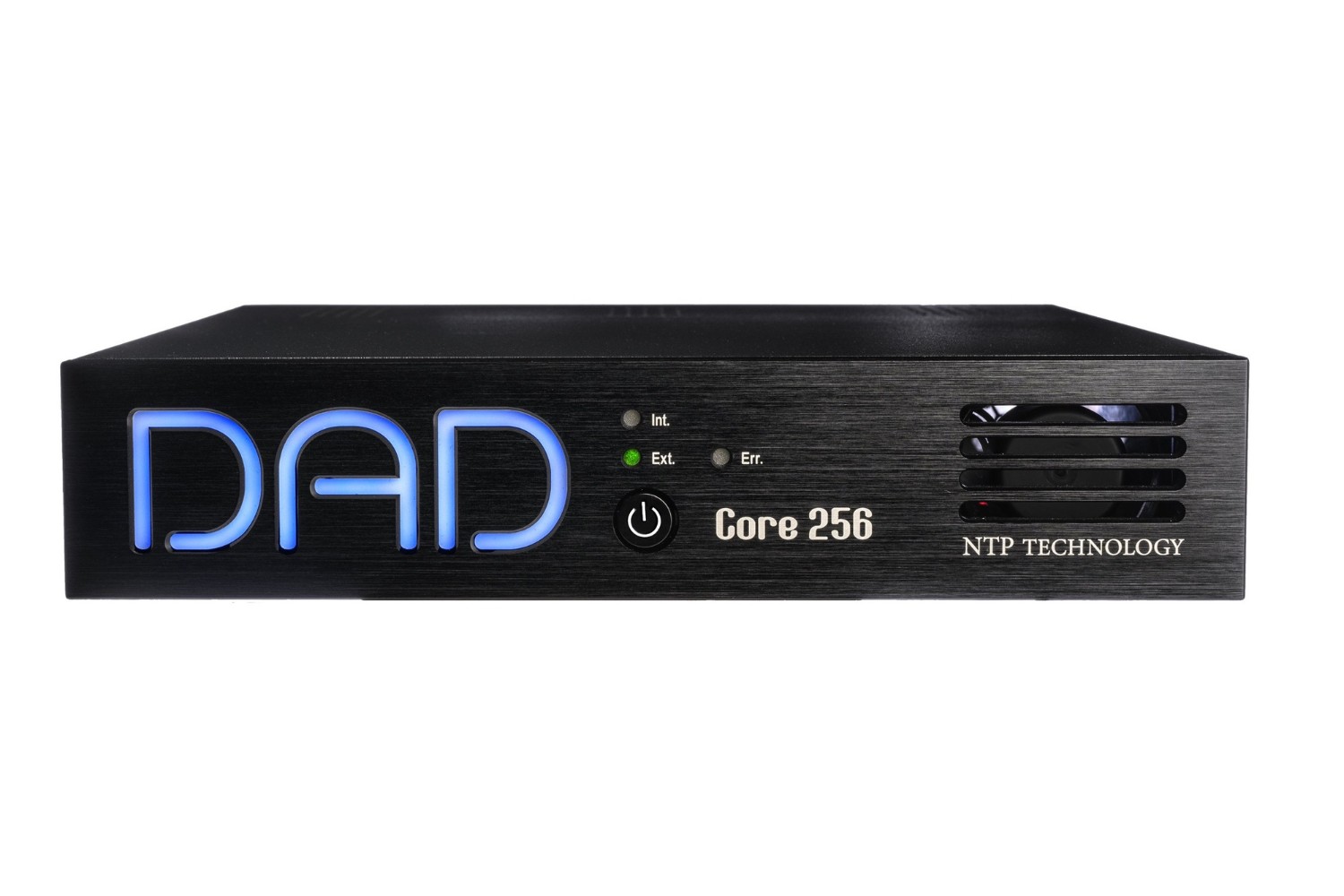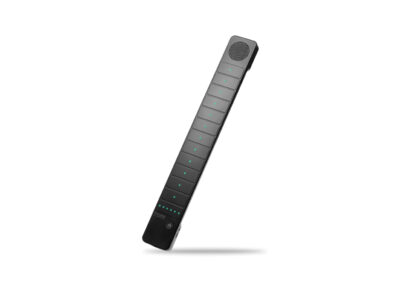Digital Audio Denmark (DAD) Core 256 | CDA Pro Audio | Enquire for pricing
The ever increasing demands for digital connectivity, routing flexibility and sheer number of I/O requirements within broadcast, post production, live and studio spaces within the past few years is staggering. It should come as no surprise that the leading names of AD/DA converters have been working tirelessly to create new and exciting products capable of handling these large scale audio demands, and with the rapid rise and expansion of immersive audio continually knocking on the door, it seems everything is scaling up in a big way!
Read more gear reviews here.
Digital Audio Denmark (DAD)
Digital Audio Denmark (DAD) have continually led the way in high-end AD/DA conversion, with a particular emphasis on AoIP(Audio over Internet Protocol) integration ingrained within their respective product lines, not to mention the usual suspects of digital audio protocols of course. The release of their latest family of products—Thunder|Core—has proved just how dedicated DAD are to creating innovative and flexible solutions in bridging all types of digital audio – with no finer example of this than their “Tiny Immersive Audio Hero”: the Core 256.
Core 256
An immensely powerful digital router and monitoring computer interface – the Core 256 well and truly earns itself the title of the ultimate digital bridge. Providing a staggering 720 total channels of I/O including 256 bi-directional channels of Thunderbolt 3 I/O (at 48kHz and 96kHz), 256 Dante AoIP channels (48kHz), 64 channels of MADI I/O via BNC and 16 channels of ADAT (4 channels SPDIF), as well as World-Clock in and out.
The optional expansion slot provides a further 128 channels of MADI I/O via the SFP option card, in case one requires even more connectivity. Incredible processing power of 512×64 channels via Pro | Mon summing and speaker EQ processing provides an unparalleled level of intricate control over an entire speaker system, pertaining to the various realms of immersive audio, including but certainly not limited to Dolby Atmos spec – all of which accessible via the 1500 x 1500 matrix, packed with 32-bit floating point processing.
Based on the physical connectivity alone, Core 256 is purpose built with flexibility in mind. As expected with major installs, post production, broadcast, recording studios and live sound environments, numerous digital protocols are typically implemented at numerous stages of a given signal chain, all of which require connection, routing and processing – making the Core 256’s wealth of digital connectivity incredibly alluring in these domains. As for expansion and connectivity with other devices, this is easily achieved by the ability to daisy chain up to six DAD devices via Thunderbolt 3 – making child’s play of integrating Core 256 into existing systems. So existing DAD AD/DA converter users requiring a simple digital I/O bridging solution need not look further.
Despite its humble half rack footprint, no expense has been spared with the Core 256 in regards to its AD/DA, being as transparent as one would expect from a DAD converter. What you put in, is exactly what you get out, a veil of invisibility cloaks these converters that very few others can genuinely match. The heightened sense of clarity and distinct lack of sonic influence can almost be a little startling, particularly if more familiar with other converters imparting an influence on source material, whether they mean to or not.
Like all DAD AD/DA converters, control of the Core 256 is via DAD’s proprietary control software, DADman. For the Core 256, connectivity to DADman can be either via Ethernet or a communications channel on the Thunderbolt 3 ports. Setup and routing for an entire system couldn’t be more simplified via the intuitive interface, which is a comfortable and familiar crosspoint style matrix – making complex routing configurations or patching input and outputs to multiple destinations painfully easy. Patching between various digital cross points is all too simple, with the barebones aesthetic of DADman never leaving you lost as to where your patch is located in relation to I/O numbering. This is particularly helpful when deep in the matrix layout of, say, the 256 channels of Dante. This all collectively makes light work of potentially very complex patching across Core 256’s digital I/O and/or other DAD products within a system. Aside from its ease of use and intuitive layout, the simplicity and rather unexciting aesthetic of the DADman software indicates only one thing – DAD’s resources are going to the where they should, the converters themselves, not a flashy control software general user interface. Exactly as it should be.
Being Pro | Mon supported, speaker and overall system calibration for the Core 256 can be achieved via this controller and software, allowing for up to 128 channels of speaker EQ and delay for fine tuning an entire system, anything from mono through to a full Dolby Atmos configuration. This is perfect for a multitude of install, broadcast, live and recording studio scenarios, particularly when complex system wide control and tuning, handled from one centralised hub.

As for overall performance of the Thunder | Core interface, latency is incredibly low – reporting a staggering 670 microseconds at 96kHz set at a buffer size of 32 samples. The fixed latency design makes for incredibly reliable performance in critical environments, particularly when routing of all inputs to one or more outputs. It’s this level of design finesse and reliability that gives DAD converters a leading edge for mission critical audio environments – where stability, reliability and accuracy across all connections are key.
Renowned for their neutrality, openness and seemingly invisible sonic fingerprint, DAD’s converters have earned their place (and praise) amongst top engineers, producers and mixers across the globe for good reason. They do what any high-end converter should do to audio that passes through them: nothing. The Core 256 is absolutely no exception to this solid reputation, offering a high-end solution of digital connectivity, routing and monitoring geared for the most demanding of professional digital audio environments.
For local enquiries, visit CDA Pro Audio.

